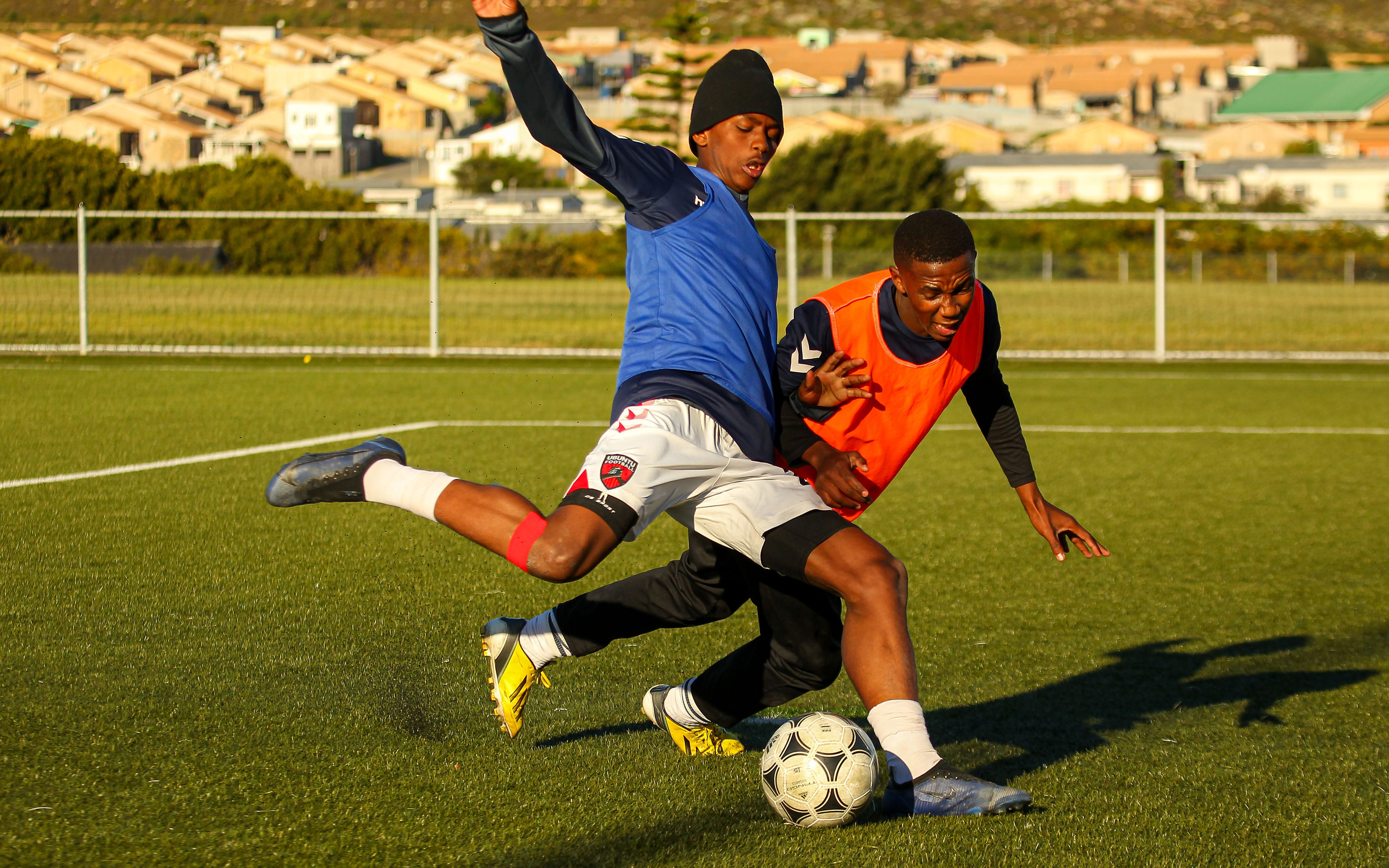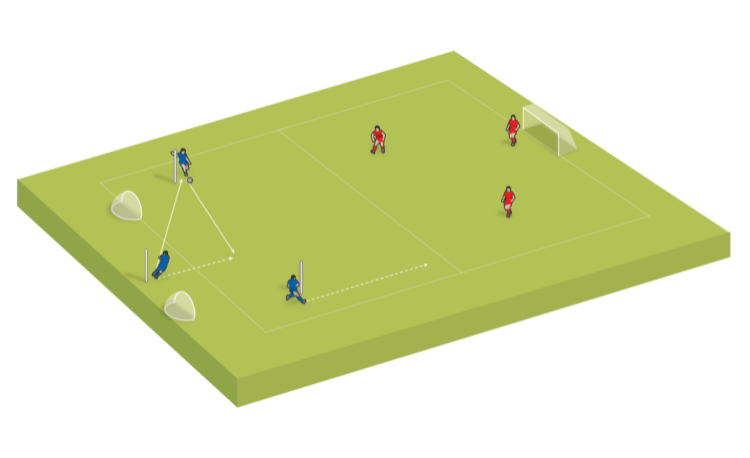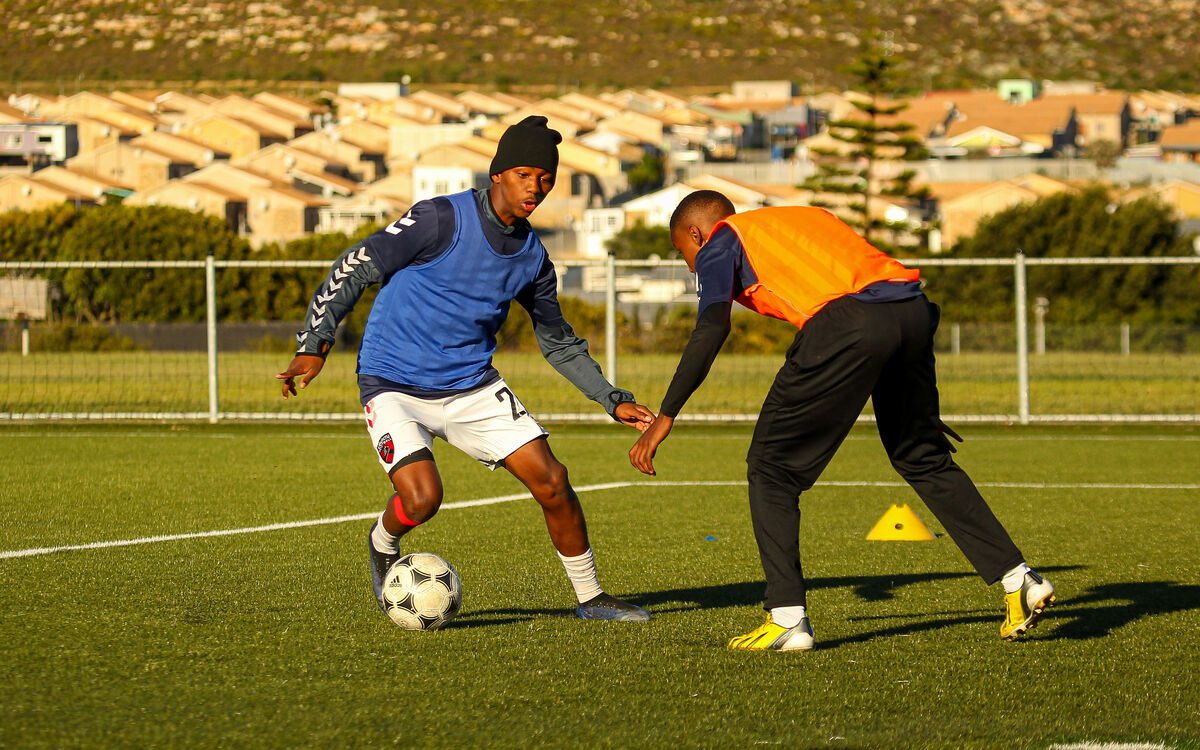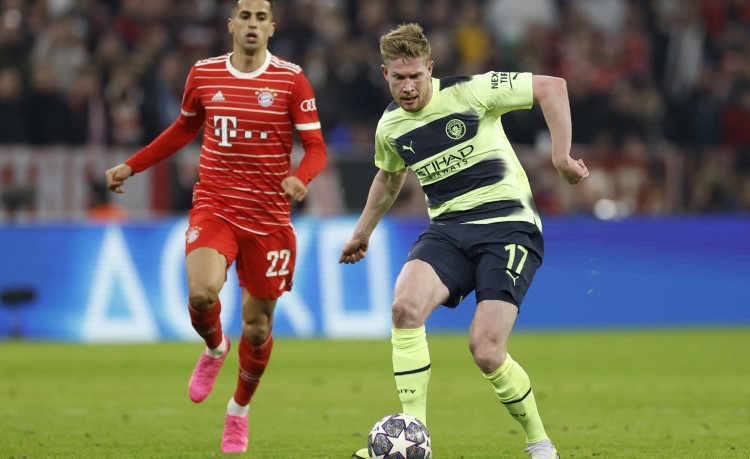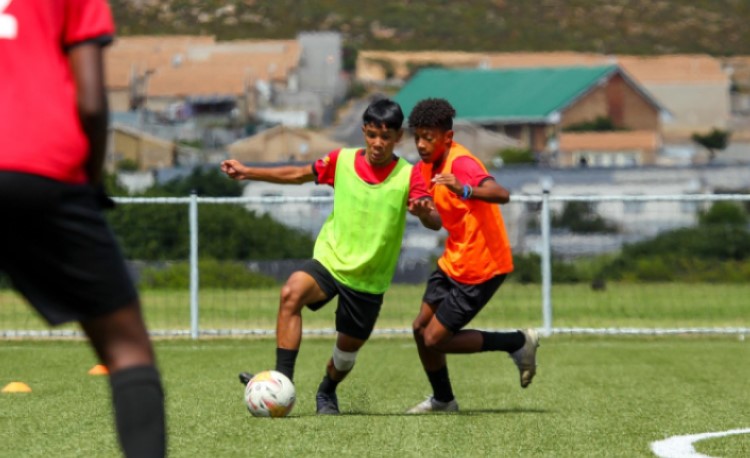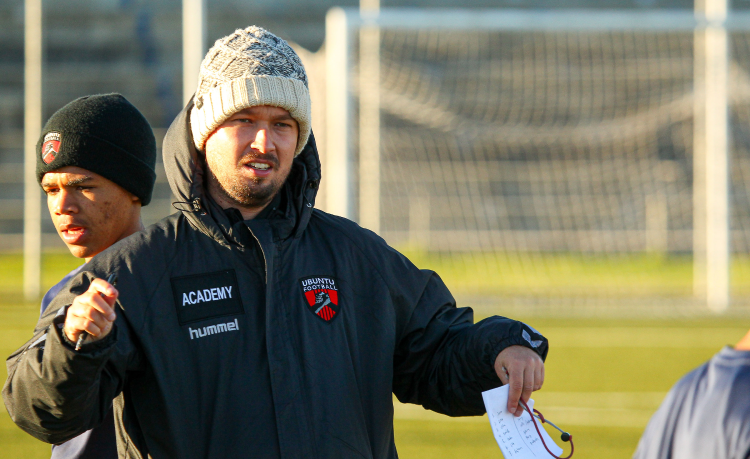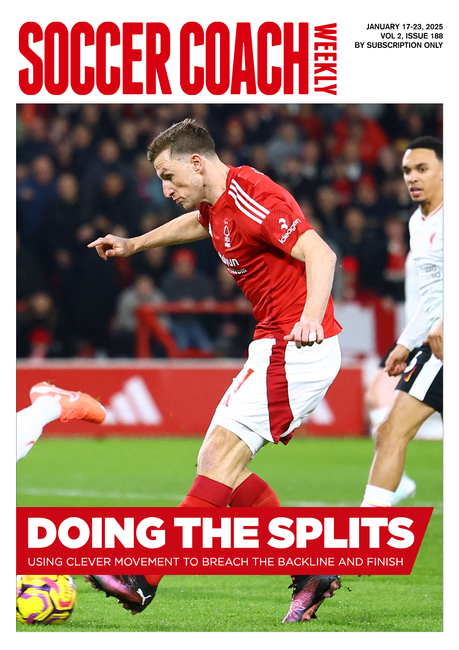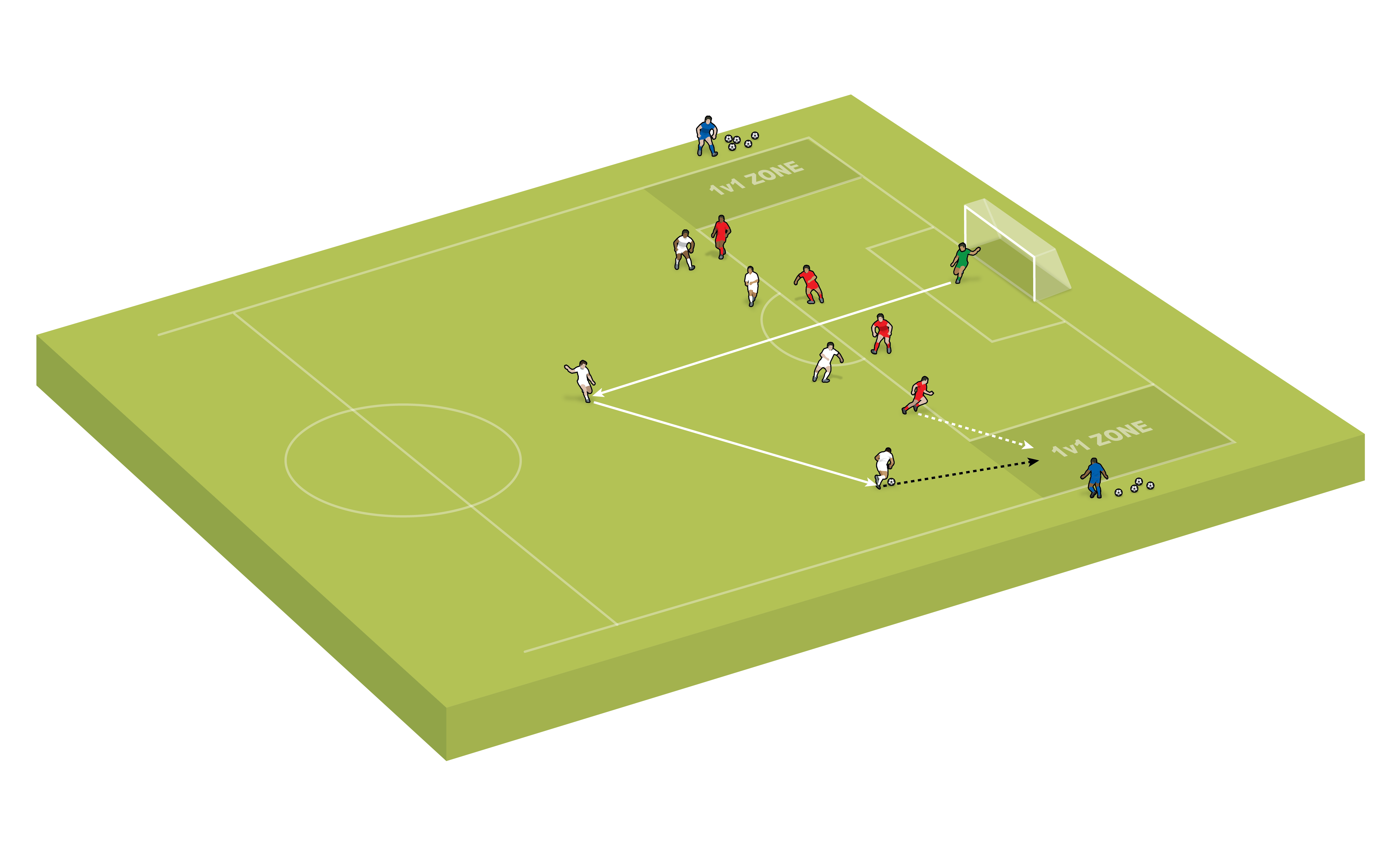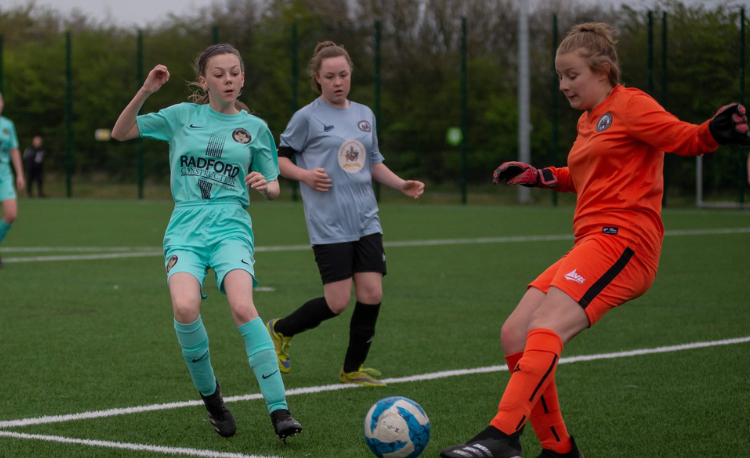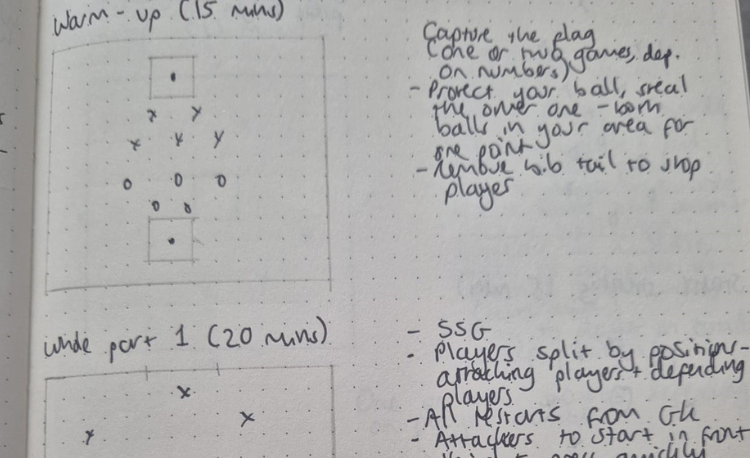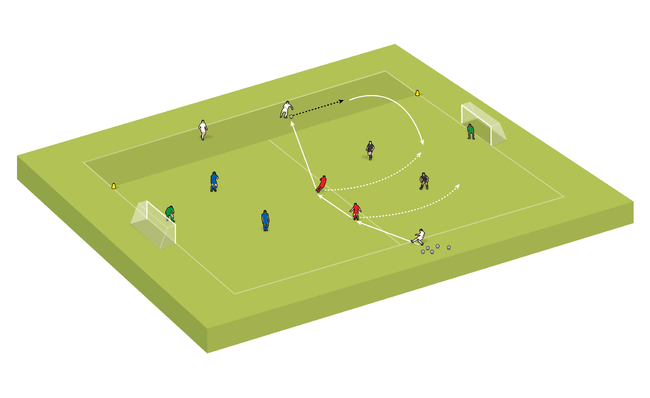Developing soccer skills: finishing
Moritz Kossmann discusses the fine art of scoring goals and how to coach the skills. Steph Fairbairn asks the questions.
Goals win games. But attempting to finish, never mind actually scoring, isn’t easy to do.
Moritz Kossmann is a coach at Ubuntu Football Academy in Cape Town, where he coaches the U21s - who play in the third tier of South African football - and oversees the senior section, made up of U18s and U16s.
He spoke to Soccer Coach Weekly about finishing. Moritz covers what it is, the techniques and the building blocks for players learning the skill…
SCW: Can you give us a definition of finishing?
MK: Finishing refers to the act of attempting to score a goal. It can be done with various parts of the body - in the official laws of the game, you can score with any body part except your hands and arms.
In terms of a difference between shooting and finishing, shooting is a form of finishing. It is most commonly the act of attempting to score from a little bit further out.
In the modern game, things have moved a bit more towards attempting to score from closer range where, in the past, there was a higher proportion of shots from further distances.
SCW: What are the other forms of finishing, then? What are the things that contribute to finishing?
MK: Heading is a form of finishing. One-touch finishes in the box are perhaps the most common form of finishing.
A higher proportion of shots are being taken from inside the box, compared to previously when there was a higher proportion from outside the box, and perhaps also from acute angles.
There’s definitely a trend towards finishes happening more often with one touch [and] perhaps with less of a power focus and more of a placement focus.
Certainly [there is] more of a focus on attempting to finish quickly, rather than more traditionally loading up, taking your time and trying to really smash the ball at goal.
Obviously that is still an important skill for players to learn. But I think if we take the analysis of where the game is going, [then there is a trend towards] finishing inside the box, particularly in what some refer to as ’the golden zone’.
[If you imagine it], this would be a box from the width of the six-yard box all the way to the penalty spot.
Most commonly, learning to finish quickly with one touch in that zone, for me, would be the most important aspect of the act of attempting to score goals.
SCW: You mentioned power and placement. Could you expand a bit more on when you might choose one over the other?
MK: The most important rule for finishing would be to be as accurate as possible and as hard as necessary.
There’s obviously the aspect of power, which is determined by how far you are from the goal, the distance between you and the goalkeeper and the amount of defenders that might be blocking.
Obviously, different field positions might require different levels of power, but the aspect of accuracy is the most crucial.
For any football player, the harder they kick, the more they tend to lose the accuracy. So we have got to teach our players that they have got to learn to aim at particular areas of the goal and then use the power as a secondary aspect in order to have an efficient action in that moment.
But if I have a clear shot at goal from 10 metres out, with a goalkeeper to beat, I don’t need to smash the ball through them but, rather, try to place it in the corner.
Lionel Messi is obviously one of the most fantastic football players of all time. His signature action when shooting at goal is really a side foot. It’s almost like a very hard side-foot pass.
Arjen Robben is another example of a proponent of that similar shooting technique - side foot, always aiming at the far corner of the goal. At the top level, there’s certainly a movement towards that.
SCW: How can we coach the technique? What do players need to know?
MK: The first thing [is that] the side of your foot offers a larger surface area than the lace area. So, as a starting point, it makes sense to prefer that over the laces.
The laces offer a smaller surface area, but you can generally get more power. For me, it’s still important, but it would be a secondary technique that I would teach.
The placement of the non-kicking foot next to the ball is crucial. It gives you a stable base to work from.
With the upper body, the most traditional coaching point you can make is of trying to lean over the ball, rather than leaning far back, which causes a tendency to kick the ball over the target.
Another point for shooting at goal from a further distance would be something like trying to hit the ball in the correct spot.
I was doing a little bit of messing around before a training session with some of our players. A big difference, compared to how they were kicking the ball, was that I was very much trying to focus on hitting the ball in the sweet spot, in the centre of the ball.
Some of them were swinging much harder at the ball but hitting it in unfavourable places and therefore not getting even the same amount of power, relatively speaking.
A little bit of focus on clean action over maximal heavy power is an important consideration.
Always try to aim your shots at goal, rather than just trying to smash through [the ball], as you tend to lose the body shape.
"The placement of the non-kicking foot next to the ball is crucial. It gives you a stable base..."
It’s like being a golfer - if I try to hit a drive and I’m just trying to really smash the ball, I tend to not get the maximum distance I can get, because I might be just hooking the ball to one side or shanking it to the other.
Shooting, even when you’re trying to teach power as a secondary thing, is very similar to that - even though we are obviously talking of this action being executed in a dynamic environment, whereas golf is a more static environment.
SCW: In terms of the lead up to a finish, how do we want to encourage players to set themselves up? What are the actions that lead up to that final action?
MK: I think that is actually the most key aspect. We are most likely to be finishing in the box itself these days, which in most situations comes with a really high level of opponent pressure, so we have generally only got one touch to make a finish at goal.
It is extremely difficult to finish technically clean when I am doing it from a standing position. I will really struggle to react to the flight and the movement of the ball from a static position.
So a big coaching point for me is to try to arrive at the same time as the ball arrives in the place where you want to strike the ball.
If we take a service from wide as a starting point, and we’re passing it into the box, then I don’t want our forward to be standing in the box already, but, rather, making a run and meeting the ball in the place where they are wanting to shoot at goal.
Related Files
This aspect of finishing from a dynamic position, rather than from a static position, is extremely key.
From a dynamic position I am much more agile and able to react much better. I have a much larger range of movement and range of space I can react to than when I’m doing it standing still, where I can’t get as high in the air and I’m not as agile to react to the bounce of the ball or a late action from a defender to attempt to block.
This, for me, is the most important [aspect]. Can I meet the ball dynamically in order to make the finish?
In terms of a run into the box, it is very important that I’m making movements off the ball towards the zones on the field where finishing is most likely to yield results.
Gary Lineker said recently that if he made seven or eight runs in behind the defence, as a forward, he expected he would get a finish on goal on maybe one occasion.
Another thing to teach our players is that they might very often make runs into promising positions and not get the ball. But those runs still need to be made.
Football is a low-scoring sport. If I make 10 runs into the box and I get a promising finish from two of those, and I score, I have had a very large impact on the game.
Teaching our forwards and midfielders this aspect of patience and being able to take moments where they make actions that don’t yield immediate results, especially when we’re moving towards 11v11, is key.
"If I make 10 runs into the box and score from two, I have had a large impact on the game..."
Those runs into promising positions, even if you don’t get the ball, can still have a good effect on the game. It might take defenders out of position and create space for other players. It might just mean the opponent is winning it back in lower zones on the field from where it’s more difficult to counter.
Players have to learn that making movements will always influence the game in an indirect way, but not always in a direct way. If they are able to understand that, I think that is key to being a really good attacking player.
Subscribe Today
Subscriber Testimonials

Gerald Kearney, Downtown Las Vegas Soccer Club

Paul Butler, Florida, USA

Rick Shields, Springboro, USA

Tony Green, Pierrefonds Titans, Quebec, Canada
Subscribe Today
Newsletter Sign Up
Coaches Testimonials

Gerald Kearney, Downtown Las Vegas Soccer Club

Paul Butler, Florida, USA

Rick Shields, Springboro, USA

Tony Green, Pierrefonds Titans, Quebec, Canada
Subscribe Today
Discover the simple way to become a more effective, more successful soccer coach
In a recent survey 89% of subscribers said Soccer Coach Weekly makes them more confident, 91% said Soccer Coach Weekly makes them a more effective coach and 93% said Soccer Coach Weekly makes them more inspired.
*includes 3 coaching manuals
Get Weekly Inspiration
All the latest techniques and approaches
Soccer Coach Weekly offers proven and easy to use soccer drills, coaching sessions, practice plans, small-sided games, warm-ups, training tips and advice.
We've been at the cutting edge of soccer coaching since we launched in 2007, creating resources for the grassroots youth coach, following best practice from around the world and insights from the professional game.
